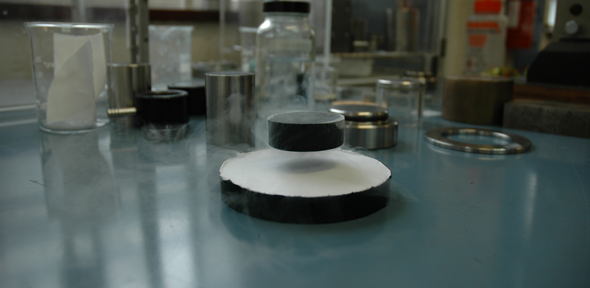Superconductor Traps The Strongest Magnetic Field Yet
A 17.6-tesla field contained in a bar the length of a human thumb

Engineers have trapped the strongest-ever magnetic field inside a superconductor. The result was a super-powerful magnet—about six times as strong as the magnets found in an MRI machine—about the size of a human thumb.
The research is part of an ongoing effort to create superconductor magnets that don’t need to be cooled to extreme temperatures. Such magnets could go into flywheels for energy storage, separators for purifying metals or cleaning pollution, and maglev trains, according to a news item from the University of Cambridge. The researchers involved in making this new superconductor came from Cambridge, the National High Magnetic Field Laboratory in Florida, and the Boeing Company.
Next, the researchers plan to try to make a superconductor trap a magnetic field of 20 teslas or greater.
This new superconductor magnet has a strength of 17.6 teslas. It also works at temperatures above that of the boiling point of nitrogen (-196 degrees Celsius), so it should be cheaper and easier to maintain than a conventional superconductor, which requires temperatures near absolute zero (-273 degrees Celsius).
One of the researchers’ big challenges in making this superconductor magnet was ensuring it stayed intact. Lines of magnetic flux in a superconductor strongly repel each other. The material researchers used to make this superconductor, gadolinium barium copper oxide, is brittle, ceramic-like stuff. Trapping this strong of a magnetic field inside this material could cause it to explode. To strengthen the material, researchers altered its structure at a molecular level. They also “shrink-wrapped” it with a band of stainless steel.
Next, the researchers plan to try to make a superconductor trap a magnetic field of 20 teslas or greater, according to the National High Magnetic Field Laboratory. They’re also trying to develop practical applications for what they’ve got.
They published their work last week in the journal Superconductor Science and Technology.
[University of Cambridge, National High Magnetic Field Laboratory]